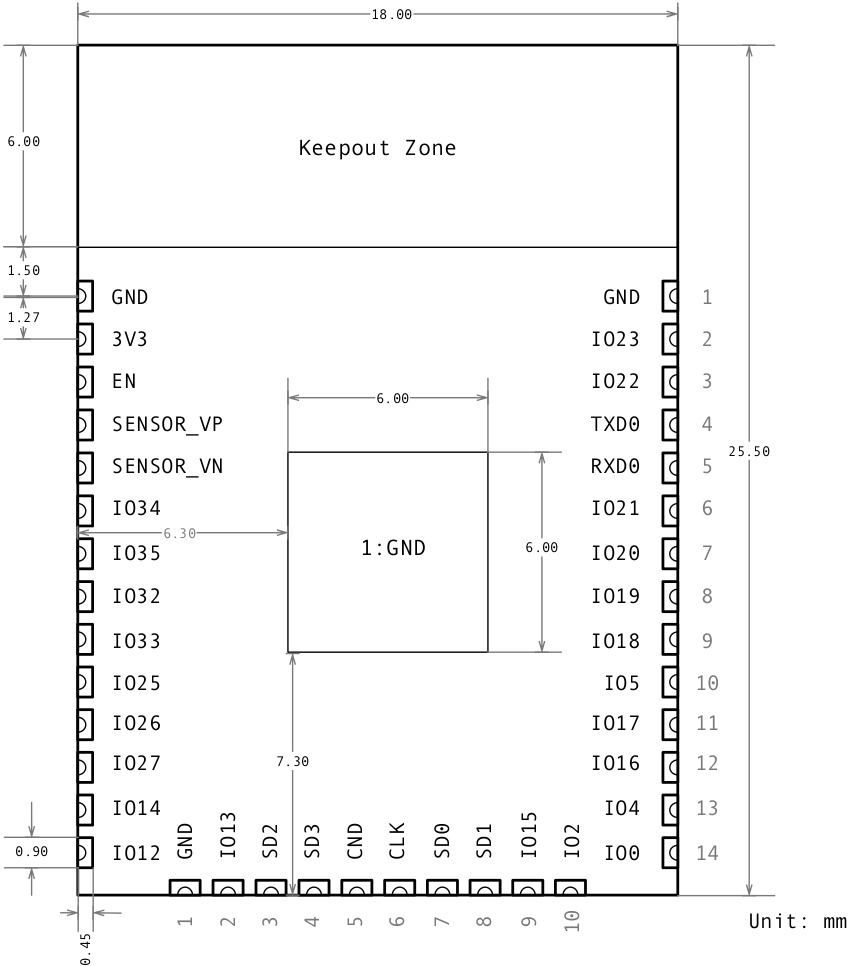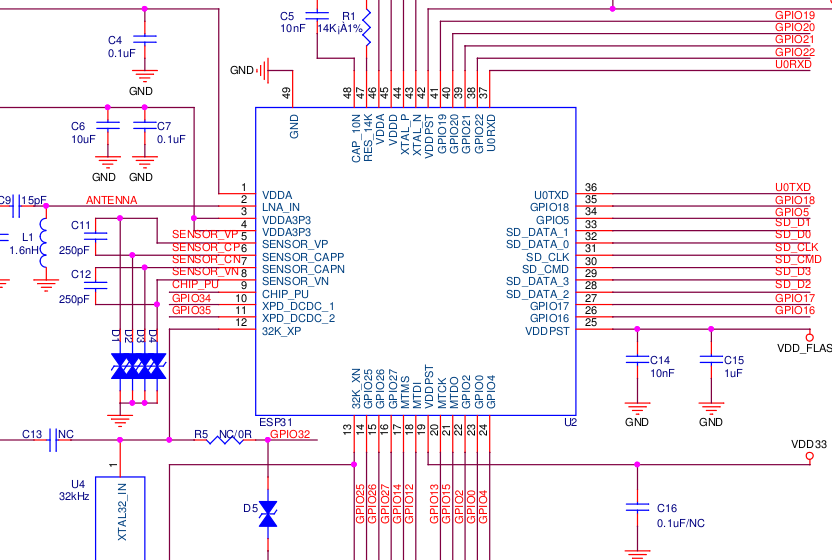Espressif teased about their ESP32 WiSoC with WiFi and Bluetooth LE a few weeks ago in a letter addressed to developers, but did not release that much information. The company has now released some documents in the forums (registration required) concerning ESP32 module including PCB processing requirement, schematics and PCB layout, and bill of materials.

The very first modules will actually be based on ESP31 processor, which only slightly differs from ESP32 with some swapped pins. The BoM is pretty small with several capacitors and resistors, one inductance, a 26 MHz crystal, ESP31, and a Gigadevice flash.
The schematics have been designed with Orcad 16.6, so if you don’t have the program, you can read the schematics with Orcad 16.6 Lite, which is free to download. I’ve also printed the schematics to a PDF file. I’m not sure how to open the .pcb file which should be the module’s PCB layout.

Jean-Luc started CNX Software in 2010 as a part-time endeavor, before quitting his job as a software engineering manager, and starting to write daily news, and reviews full time later in 2011.
Support CNX Software! Donate via cryptocurrencies, become a Patron on Patreon, or purchase goods on Amazon or Aliexpress





